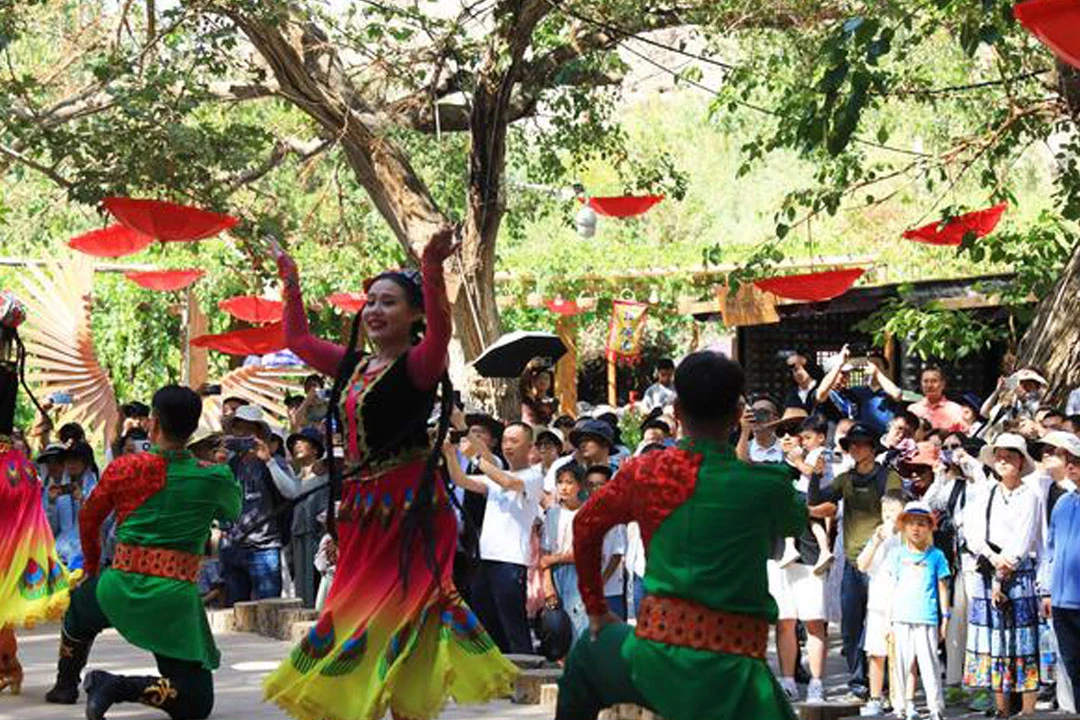The Ancient Silk Road Legacy: A Tapestry of Trade and Cultural Exchange
Xinjiang, a land steeped in ancient history and mystique, unfolds like a living chronicle of human civilization. From the bustling trade routes of the Silk Road to its modern-day tapestry of diversity, Xinjiang's rich cultural fabric is woven with mesmerizing tales of bygone eras. Exploring Xinjiang is akin to embarking on a journey through living history, where every relic, artifact, and tradition speaks volumes about its illustrious past.

Artistic Treasures Carved in Stone: The Fusion of Religious Traditions
As a pivotal node on the ancient Silk Road, Xinjiang bears witness to the profound cultural exchanges between East and West. The region's ancient city ruins, cave art, and trading posts vividly showcase its erstwhile prosperity. These historical sites reveal the footsteps of ancient merchants and resonate with the dialogue and collision of diverse civilizations.
Celebrating Cultural Vitality: Music, Dance, and Festivities
Xinjiang's ethnic music and dance form an integral part of its cultural tapestry. From the mesmerizing melodies of Uyghur Muqam to the rhythmic beats of Kazakh Dombra and the majestic Tajik Eagle Dance, each musical note and dance step embodies the history and emotions of its people. Through these art forms, one can experience the vibrant spirit and distinctive cultural identity of Xinjiang's diverse ethnic groups.
Nestled in the heart of Central Asia, Xinjiang beckons travelers with its rich tapestry of cultural heritage and natural beauty. This vast region, known for its historical significance as a crucial junction on the ancient Silk Road, continues to captivate the imagination with its blend of traditions spanning millennia.
The Ancient Silk Road Legacy: A Tapestry of Trade and Cultural Exchange
Xinjiang's role as a pivotal hub along the ancient Silk Road facilitated the exchange of goods, ideas, and cultures between East and West. Traversing the region's ancient city ruins, cave art, and trading posts, one can envision the bustling scenes of merchants from distant lands converging here, bringing with them not just commodities but also a mosaic of languages, beliefs, and customs. The remnants of these interactions, etched in stone and preserved through centuries, narrate tales of prosperity and cultural synthesis.
The renowned Kizil Thousand Buddha Caves and Bezeklik Thousand Buddha Caves stand as testaments to the artistic prowess and religious amalgamation that characterized ancient Xinjiang. These cave complexes, adorned with exquisite murals and sculptures, not only serve as repositories of Buddhist artistry but also as windows into the spiritual and cultural exchanges that shaped the region's identity. The interplay of Buddhist iconography with local motifs reflects Xinjiang's unique position as a crossroads of civilizations, where diverse cultures converged and coalesced.
Artistic Treasures Carved in Stone: The Fusion of Religious Traditions
The renowned Kizil Thousand Buddha Caves and Bezeklik Thousand Buddha Caves stand as testaments to the artistic prowess and religious amalgamation that characterized ancient Xinjiang. These cave complexes, adorned with exquisite murals and sculptures, not only serve as repositories of Buddhist artistry but also as windows into the spiritual and cultural exchanges that shaped the region's identity. The interplay of Buddhist iconography with local motifs reflects Xinjiang's unique position as a crossroads of civilizations, where diverse cultures converged and coalesced.
Celebrating Cultural Vitality: Music, Dance, and Festivities
Beyond its historical significance, Xinjiang pulsates with the vibrant rhythms of its ethnic music and dance traditions. The Uyghur Muqam, a classical musical tradition recognized by UNESCO, embodies the artistic refinement and cultural heritage of the Uyghur people. Accompanied by traditional instruments such as the dap and tambur, Muqam performances evoke a sense of nostalgia for Xinjiang's storied past while celebrating its enduring cultural resilience.
Similarly, the Kazakh Dombra and Tajik Eagle Dance showcase the diversity of Xinjiang's cultural tapestry. The rhythmic strumming of the Dombra and the graceful movements of the Eagle Dance reflect the unique traditions and rituals of their respective communities, offering a glimpse into the cultural vitality and ethnic diversity that define Xinjiang's identity.
In conclusion, Xinjiang's cultural landscape is a testament to its enduring legacy as a crossroads of civilizations. As travelers explore the region's ancient Silk Road heritage, artistic treasures, and vibrant cultural traditions, they are not merely witnessing history but actively participating in the ongoing dialogue between past and present. By embracing Xinjiang's rich cultural heritage, visitors can gain a deeper appreciation for the region's diverse ethnic tapestry and its profound contributions to human civilization.


